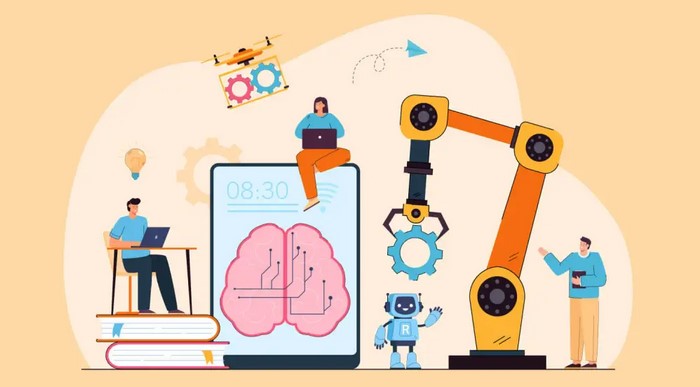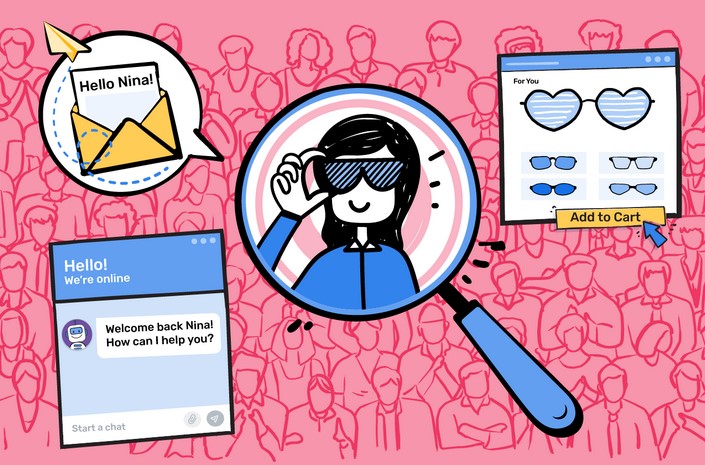
Artificial Intelligence (AI) is no longer confined to the realm of science fiction; it has firmly integrated into various industries, especially in robotics. In recent years, AI in robotics has transformed the way machines interact with the world around them, moving beyond mere automation to sophisticated systems that collaborate with humans. This evolution is not just about making robots smarter or more autonomous; it’s about creating intelligent systems that can understand, predict, and respond to human actions. As we move into the future, the fusion of AI and robotics promises to reshape industries, workplaces, and even our daily lives.
In this article, we’ll explore how AI in robotics is bridging the gap between machines and humans, enhancing automation, improving safety, and enabling new possibilities for human-robot collaboration.
1. The Rise of AI-Powered Automation in Robotics
For decades, robots have been used in manufacturing and other industries to perform repetitive tasks with speed and precision. However, traditional robots were limited to predefined instructions and lacked flexibility. They could carry out specific tasks, like welding, assembly, or packaging, but could not adapt to new environments or interact intelligently with people.
With the integration of AI, robotics has entered a new era of automation. AI-powered robots can now analyze their surroundings, make decisions, and perform complex tasks autonomously. This makes them suitable for a wide range of industries, from manufacturing and healthcare to logistics and even customer service.
Machine Learning and Computer Vision in Robotics
One of the most significant advances in AI in robotics is the use of machine learning and computer vision. These technologies enable robots to “see” their environment and learn from it. Using cameras and sensors, robots can recognize objects, navigate through unfamiliar spaces, and even identify anomalies in real-time.
In manufacturing, for example, robots equipped with AI-powered vision systems can inspect products for defects, sort items based on size or color, and even collaborate with human workers in assembly lines. This ability to learn and adapt in real-time allows robots to operate more efficiently and with fewer errors, reducing the need for manual intervention.
Machine learning, specifically reinforcement learning, also plays a crucial role in AI-driven robotics. This technique enables robots to learn from their mistakes, improving their performance over time without explicit programming. For instance, a robot tasked with sorting different items can learn from trial and error to optimize its sorting process, making it more effective and faster as it gains experience.
2. Human-Robot Collaboration: Enhancing Efficiency and Safety
AI is not only making robots smarter but also enabling them to collaborate seamlessly with humans. This is particularly important in environments where human workers and robots need to work side by side without causing harm to each other.
Collaborative Robots (Cobots)
Collaborative robots, or cobots, are designed to work alongside human workers in a shared workspace. Unlike traditional industrial robots, which are often separated from human workers for safety reasons, cobots can perform tasks like lifting, assembly, and packaging without the need for safety barriers. Thanks to AI, cobots can recognize human movements, adjust their actions accordingly, and even anticipate human intentions.
For example, in a warehouse, a cobot might assist a human worker by transporting heavy items. The AI in the robot helps it understand when the human worker is about to pick up an item and adjusts its movement accordingly to avoid collisions. Cobots are designed to be safe and easy to program, which means that they can be quickly deployed in various industries.
In healthcare, cobots can also assist doctors and nurses in tasks such as lifting patients or delivering medical supplies. AI helps these robots recognize gestures, adapt to dynamic environments, and prioritize safety, which is crucial in healthcare settings where precision and care are paramount.
AI in Robotics for Personal Assistance
Beyond industrial and professional settings, AI in robotics is also making strides in personal assistance. Robots that assist in daily life are being developed for home healthcare, elderly care, and even companionship. These robots can help with mobility, monitor health vitals, and even provide reminders for medication, all while ensuring they understand and respect the personal space of their human companions.
For example, in eldercare, robots equipped with AI-powered sensors can detect when a person falls or if they are experiencing health complications. The robot can then alert a caregiver or family member, potentially saving lives by acting before the situation becomes critical. These robots can learn the routines and preferences of their users, providing personalized assistance that helps people live independently for longer.
3. The Future of AI in Robotics: From Automation to Human-AI Symbiosis
Looking ahead, the future of AI in robotics holds immense promise. As AI continues to evolve, robots will become even more capable of performing complex tasks autonomously while adapting to new environments. However, the ultimate goal is not just automation but human-AI collaboration. In this future, robots won’t just be tools for efficiency; they’ll be intelligent partners, working alongside humans to enhance creativity, problem-solving, and decision-making.
AI-Enhanced Creativity and Innovation
In industries such as design, engineering, and entertainment, AI-powered robots could assist with creative tasks, from generating new ideas to building prototypes. For example, an AI-driven robot in the design field could analyze trends, understand customer preferences, and generate multiple design concepts, which human designers can then refine. This collaboration between human creativity and AI efficiency could lead to groundbreaking innovations.
AI-powered robots could also transform industries like agriculture. Autonomous robots could monitor crops, collect data on soil conditions, and even predict the optimal harvest time based on environmental data, all while working in collaboration with farmers to maximize yield and reduce waste. This would not only make agriculture more efficient but also more sustainable.
Ethical and Social Implications
As robots become more intelligent and capable of working alongside humans, there are ethical and social implications to consider. How will the workforce change as robots take on more tasks? What does it mean for privacy and security when robots are integrated into everyday life? Ensuring that AI and robots are designed and used responsibly will be key to realizing their full potential.
As we move forward, AI in robotics is set to redefine what is possible in automation and human collaboration. With advancements in machine learning, computer vision, and real-time decision-making, robots are becoming more intelligent, adaptive, and capable of working alongside humans in a variety of industries. Whether in manufacturing, healthcare, or personal assistance, the integration of AI and robotics promises to improve efficiency, safety, and productivity, while also opening up new possibilities for creativity and innovation.
In the years to come, the combination of AI and robotics will foster a symbiotic relationship where humans and machines work together to achieve shared goals. The future of AI in robotics holds endless possibilities, and as technology continues to evolve, so too will the ways in which we interact with and benefit from these intelligent systems.


